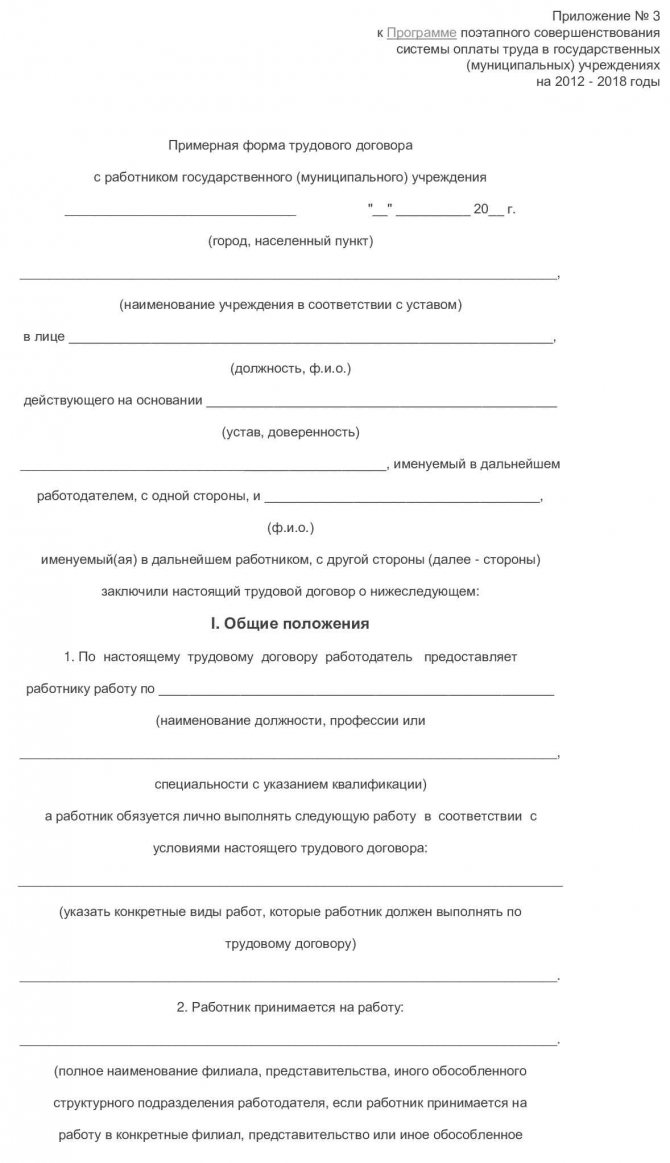The introduction of an effective contract (EC) in the public sector was set as a goal more than 8 years ago, back in 2012. First, in the Decree of the President of the Russian Federation of May 7, 2012, then, in the same year, in the Budget Message of the President. Further, the topic was raised by the guarantor himself and even by federal channels more than once, but “things are still there.” The need to implement the Decree is remembered only when public conflict situations arise when calculating incentive payments to employees of large government institutions. These conflicts spill over into the public sphere, reaching the media and sometimes the President.
We are not ready to draw conclusions about the presence or absence of someone’s guilt (there are specially trained repressive bodies for this), however, it is obvious that there is a complete lack of transparency in the calculation of incentive payments and a lack of understanding of this system by employees. The result of this misunderstanding is already typical - a conflict with management, public dismissal / appeals to the media, bringing the situation to senior officials and the President, who begins to implement his own May Decree manually.
Based on the results of the next debriefing, the last Chinese warning is issued, the next meeting is held with the relevant ministers and a reminder is given that the decrees must be followed. It is immediately noticeable from the face of the relevant minister that he realized everything and made conclusions, but in the end we get another conflict situation.
The latest example of the local inability to fulfill the simplest requirements for calculating incentive payments can be seen in the huge number of indignations among doctors during the first wave of the pandemic. Moreover, the President’s demand sounded as specific as possible - all health workers who work with “Covid” patients should receive full payment. As a result, he had to comment on his demand, saying that yes, he meant exactly what he said, and there was no need to interpret it differently.
It turns out that for the effective implementation of the EC, it is necessary for the President to personally give instructions for each accrual, and after it is not fulfilled, to separately comment on how it should be carried out correctly. There is an assumption that this is not the level of the President and he will not deal with this. Therefore, we will tell you about another, no less effective option.
Effective contract according to the Labor Code of the Russian Federation
The issue of transition to the use of effective contracts for hiring workers was first raised in Russia in 2012 in the Budget Address of the President of the Russian Federation. This was due to the improvement of the system of hiring civil servants. Based on the Address, this year a Program was approved, providing for the gradual improvement of the system of hiring state and municipal employees (the Program).
This document indicated the need to move to the conclusion of labor contracts that determine the employee’s wages and social packages depending on the success he has achieved, on the quality and quantity of the work assigned to him.

An effective employment contract is an agreement with an employee that specifically and in detail indicates his responsibilities and the requirements placed on him. Depending on the quality and quantity of his work, the document establishes the level of payment and the level of social support provided to him.
At the same time, specific criteria are established for evaluating the work performed, labor functions are recorded in detail and the amounts of remuneration applied are indicated.
An employment contract is a legal form of concluding an effective contract. In the Labor Code of the Russian Federation, Articles 56, 57, 58 are devoted to it. The content of such an agreement is also based on the principles that were formulated in the Program. In 2013, a document was adopted (Government Decree No. 329 of April 12, 2013), which provides an approximate form of a contract for heads of government agencies.
Another solution
The most effective way out of the current difficult situation with EC will be to use a third-party application developed for the tasks of an effective contract, and in a web solution (which is relevant, including in the conditions of a sluggish quarantine), with the help of which you can download, unload and update data with high speed, set tolerances to individual capabilities and information of the service.
A similar solution exists and is already successfully used by some of the largest government institutions, for example, in the Palliative Care Center of the Moscow Health Department, Psychiatric Hospital No. 1 named after. Alekseev (“Kanatchikova Dacha”), Psychiatric Hospital No. 4 named after. Gannushkina and others.
The peculiarity of these institutions is that they are the largest, with hundreds and thousands of employees, where the calculation of incentive payments depends on tens and hundreds of middle and lower managers. In the next article we will talk in more detail about this solution and the principles of its implementation.
Differences between an employment contract and an effective contract
If a decision is made about the need to switch to an effective contract, then the following changes will need to be made to the previous document:
- Clarify the job functions performed by the employee.
- Specify what his activities are.
- Formulate the criteria according to which performance will be assessed.
- Clarify all questions related to the benefits received by the employee.
There should also be incentives for achieving collective results.
Previously, payments in the budget sector were stable. Their size was determined by position and length of service. This organization of work led to the fact that labor productivity and quality of work did not have any impact on the wages received.
The use of effective contracts has significantly changed the situation. Now, when implementing the work system in question, various performance criteria are discussed in detail. They can be divided into several groups:
- the results of the employee’s personal labor;
- indicators that characterize the performance of the entire organization;
- fulfillment of the indicators provided for in the plan.
Responsibilities
Federal Law No. 44-FZ dated 04/05/2020 determines the personal responsibility of the contract manager for compliance with procurement legislation and compliance with performance indicators.
The functions of a contract manager are varied and include the following tasks:
- develop a procurement plan;
- make adjustments to it;
- post the plan on a single information resource;
- develop a schedule and change it;
- determine the initial maximum contract price;
- post procurement notices and documentation on a common platform;
- carry out the procurement procedure;
- prepare claim materials;
- conduct consultations if necessary.
Stages of transition to a new agreement
The procedure for implementing the use of an effective contract occurs in several steps:
- The boss issues an order that it is planned to introduce the use of the type of contracts in question in the institution.
- It is necessary to organize a group of employees whose responsibilities will include the implementation of a new type of contract.
- An analysis of the documentation available in the organization is carried out for compliance with the Program and other regulatory documents in this area.
- The development of used performance indicators in relation to each employee is being carried out. It is important to note that such work occurs constantly, and does not end at some point in time.
- Based on the training provided, a form of an effective employment contract is developed.
- The provisions of the organization’s internal documents are being adjusted. Changes necessary for the implementation of new labor agreements are made to job descriptions, taken into account in the Regulations on remuneration, and reflected in the collective agreement.
- Once the necessary documents have been prepared, employees are notified of upcoming changes.
- In the manner prescribed by law, additional agreements to employment contracts are signed.
With new employees, an effective employment contract is signed upon joining.
It is important to note that the development of new performance criteria should be carried out on objective grounds. If the rights of workers are threatened, they can file a lawsuit against the organization to protect themselves.
How to motivate
The performance criteria associated with activities become the most important. Based on the content of Federal Law No. 44-FZ, the strong external indicators in the work of a contract manager are as follows:
| Indicators of an effective contract | Criteria | Grade |
| No substantiated complaints | No complaints | The assessment is carried out:
|
| The procurement plan, procurement schedule is developed and posted within the time frame specified by the legislator | No comments | |
| Changes to the procurement plan and schedule are made on time | No comments | |
| Purchases are carried out on time | No comments |
In the organization, the commission for additional payments:
- counts the points of each employee in the accounting period;
- sets the sum of points for all employees;
- determines the weight of one point in rubles;
- determines the amount of the incentive payment.
There is no form established by the legislator for the conclusion on the work of the payment commission under an effective contract, so the institution determines its own template.

Advantages and disadvantages
Using effective contracts has important advantages:
- Employees see how their performance is assessed and can receive payments in accordance with the results they achieve. For more intensive work, the employee receives higher pay.
- If employees achieve excellent results, they can count on receiving a bonus.
- Additional payment is made for the existing level of qualifications.
- Employees see what results are rewarded for and are interested in improving their work.
- The developed incentive system takes into account the specifics of the activities of a particular institution when developing an incentive system.
The disadvantage of this type of contract is the insufficient development of the provisions on which they are based. Sometimes the proposed reward system is not effective enough.
Content and structure
When concluding an effective employment contract, a standard document structure is used. It includes the following:
- The locality where the document is signed is indicated.
- Information is provided about the position, surname, first name, and patronymic of the employer. The exact name of the organization and its details are given.
- Write the last name, first name, and patronymic of the employee entering the job.
- The main part of the text notes that the employee undertakes to fulfill the work tasks facing him.
- It is necessary to indicate what the employee’s job function will be, his qualifications and work schedule.
- The term for which the employment agreement is concluded is fixed.
- The rights and responsibilities of the new employee are listed.
- Indicate the rights and obligations of the employer.
- They describe in detail the amount of salary, the availability of additional payments, and criteria for evaluating activities. They talk about incentive methods, social bonuses, and various types of incentives.
- If there are working conditions harmful to the employee’s health. The employment contract describes the compensation that will be paid in this regard.
- They talk about payments that will relate to the employee’s social insurance.
- The final part of the document contains the date, signatures of the parties and their transcripts.
Procedure for transferring an employee
In order to conclude an effective contract with an employee, it is necessary to make changes to the current employment contract. This can be done in the following ways:
- Conclude an additional agreement, which provides for changes and additions to individual clauses.
- Revise the employment agreement in a new version.
- When switching to using an effective contract, the second option is more preferable.
It is important to note that both of these methods are formalized by signing an addendum to the current agreement. This is carried out in accordance with the provisions of Article 72 of the Labor Code of the Russian Federation. It is prohibited to break the previous contact and sign a new one during the re-registration process.
Additional agreement on transition
When transferring an employee to an effective contract, it must be taken into account that the provisions included in this document are constantly being improved. For example, performance criteria may be changed or supplemented. Therefore, changes made to the document may not be one-time, but multiple.
Such changes are not made immediately. The Labor Code provides that if changes are made to the contract regarding its essential terms, the employer must notify the employee no later than two months in advance about their essence and grounds for application.
Typically, such agreements are concluded as criteria for assessing quality and performance are developed. If the employee does not agree, he can defend his rights in court. However, judicial practice is such that such decisions are often made in favor of the manager.
Calculations and accounting using CRM systems and conventional accounting programs
Accounting programs allow you to keep records of payroll and other payments in favor of employees, but there are no ready-made solutions for maintaining EC; existing programs have to be modified. Moreover, the latter are used in the form of heavy desktop solutions, unsuited to solving innovative problems and increased load.
Moreover, if we are talking about EC, and not its fiction, then we must state that information about the employee’s performance of certain indicators can and should be transmitted by his immediate (functional) management.
Consequently, in order to enter indicators, it is necessary to provide access to the system to many users (in the largest institutions these are hundreds of “workplaces” - heads of departments, etc.), which causes active resistance from accounting workers, and programmers provide both technical and methodological support. servicing such systems is very lame.
CRM systems (by the way, extremely rarely used in government agencies) allow you to take into account various criteria and implement employee performance assessment, but require a methodology. We do not know the use of EC methodologies among CRM owners.
Errors when switching to an effective contract
Sometimes it may turn out that an employee is not satisfied with changes in labor relations. However, the Labor Code gives the manager the right to sometimes make changes to the employment agreement unilaterally. Based on Article 74 of the Labor Code of the Russian Federation, this is allowed to be done in connection with changes in organizational working conditions. This may happen in the following cases:
- Workplaces are being improved, which is confirmed through certification.
- Technical working conditions are changing. This may be due either to the use of other technologies or to the use of new types of equipment.
- A structural reorganization is taking place.









